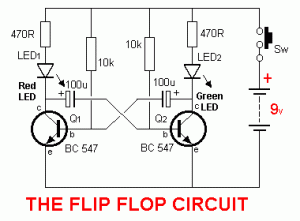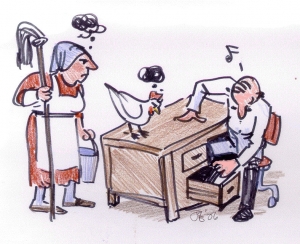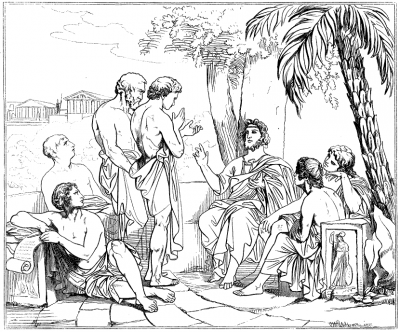Monday, January 23. 2017
OA: Did Researchers Triumph Or Get Trumped By Publishers?
by Richard Poynder.
 OA advocates are a plurality, not a monolith. “They” do not agree that only CC-BY = OA.
OA advocates are a plurality, not a monolith. “They” do not agree that only CC-BY = OA. There are two "shades" of OA:
"Gratis OA" = free access
"Libre OA" = CC-BY
The right measure of proportion OA for PMC (or any repository) is the percent that is Gratis or Libre OA, not just the percent that is CC-BY. (It also matter when it is deposited: immediately or a year or more after publication.)
The PMC figures are insufficient. Percent OA in PMC does not even represent percent OA in biomedicine, in the US or globally, let alone in all fields. And PMC, as Richard notes, is largely publisher-deposited, which means it's For-Fee Fool's Gold OA rather than author-deposited For-Free Green OA.
That the percentage OA is growing globally with time is inevitable, as the old researchers are retiring with time, and the young researchers have more sense.
The goal, however, is OA, not "living up to the BOAI definition."
And the growth rate is still absurdly slow, compared to what it could and ought to be (and have been).
Friday, December 18. 2015
Berlin Stonewalling -- or Flip-Flop
 1. Richard Poynder's take on Berlin 12 is basically valid (even though perhaps a touch too conspiratorially minded).
1. Richard Poynder's take on Berlin 12 is basically valid (even though perhaps a touch too conspiratorially minded).2. The much-too-long series of Berlin X meetings, huffing on year after year, has long been much-ado-about-next-to-nothing.
3. The solemn 2003 "Berlin Declaration on Open Access to Knowledge in the Sciences and Humanities," with its unending list of signatories, was never anything more than a parroting of the 2003 "Bethesda Statement on Open Access Publishing [sic]," which was, in turn, a verbose reiteration of half of the 2002 Budapest Open Access Initiative -- skewed toward only BOAI-II ("gold" open access publishing), virtually ignoring BOAI-I ("green" open access self-archiving).
4. For what it's worth, I attended Berlin 1 in Berlin in 2003 (out of curiosity, and in the hope it would lead to something) and we hosted Berlin 3 in Southampton in 2005 (at which it was officially recommended to require BOAI-I, green OA self-archiving, and to encourage BOAI-II, gold OA publishing -- exactly as had been recommended in 2004 by the UK House of Commons Select Committee on Science and Technology).
5. After Berlin 3 in 2005 the Berlin X series went on and on, year after year (I never attended again), but the progress on implementing the Southampton/Berlin-3 recommendations was transpiring (though still much too slowly) elsewhere (with the ROARMAP mandates being adopted in the UK, Australia, EU, and US, starting from 2003 and continuing today).
6. As far as I can tell, the Berlin X series just continues fussing about gold OA, and although I am less suspicious than Richard, I too suspect that the "secrecy" was because the institutional reps attending Berlin 12 are trying to forge a common front for working out a gold-OA "flip" deal with publishers.
And my prediction, for reasons I've repeated, unheeded, many, many times, is that any such flip will be a flop.
Monday, December 7. 2015
Why Scholars Scull
 Disagreement is always good — creative, even. I am not trying to change Richard Poynder's mind, just openly airing points and counterpoints, in the spirit of open peer commentary...
Disagreement is always good — creative, even. I am not trying to change Richard Poynder's mind, just openly airing points and counterpoints, in the spirit of open peer commentary...1. I agree that the home pages of Institutional Repositories that simply tout their generic overall deposit counts are doing numerology.
2. "Dark deposit" is rather ominous-sounding. The reality is that there are:
(i) undeposited articles,And there's the Button to supplement them. One can always describe cups as X% full or as (1-X)% empty.
(ii) metadata-only deposits,
(iii) full-text non-OA article immediate-deposits (which are non-OA for varying intervals),
(iv) full-text OA delayed-deposits and
(v) full-text OA immediate-deposits.
3. No, to calculate yearly deposit ratios using WoS or SCOPUS in order to estimate total yearly deposit ratios is definitely not "deceptive": it is valid for WoS-indexed or SCOPUS-indexed output (which also happens to be the output that the OA movement is mostly about, and for), but it might be an underestimate or overestimate for non-WoS/SCOPUS output, if for some reason their ratio differs. So what?
4. Numerology is meaningless numbers, counted for their own sake, and interpreted according to taste (which can be occult, ornate or obtuse). Calculating correlations between mandate conditions and deposit ratios and drawing predictive conclusions from correlations whose probability of having occurred by chance is less that 5% is conventional predictive statistics (which only turns into numerology if you do a fishing expedition with a very large number of tests and fail to adjust your significance level for the likelihood that 5% of the significant correlations will have occurred by chance). We did only a small number of tests and had predicted a-priori which ones were likely to be significant, and in what direction.
5. Yes, there are far too few mandates, just as there are far too few deposits. Nevertheless, there were enough to detect the statistically significant trends; and if they are put into practice, there will be more effective mandates and more deposits. (The HEFCE/Liege immediate-deposit condition for eligibility for research evaluation turned out to be one of the statistically significant conditions.)
6. I heartily agree that academics are excessively micromanaged and that evaluative metrics can and do become empty numerology as well. But I completely disagree that requiring scholars and scientists to do a few extra keystrokes per published article (5 articles per year? 5 minutes per article?) counts as excessive micro-management, any more than "publish or perish" itself does. Both are in fact close to the very core of a scholar's mission and mandate (sic) qua scholar: To conduct research and report their findings -- now updated to making it OA in the online era. Justifiable animus against excessive and intrusive micromanagement is no excuse for shooting oneself in the foot by resisting something that is simple, takes no time, and is highly beneficial to the entire scholarly community.
7. Cultures don't change on a wish or a whim (or a "subversive proposal"!); they change when the pay-off contingencies (not necessarily financial!) change. That's how publish-or-perish worked (publication- and citation-bean-counting for employment, promotion, tenure, funding) and the online era now requires a tiny, natural extension of publish-or-perish to publish-and-deposit for eligibility for bean-counting.
8. And if we remind ourselves, just for a moment, as to why it is that scholars scull in the first place -- which is not for the sake of publication- and citation-bean-counting for employment, promotion, tenure, funding), is it not so that their findings can be accessed, used and built upon by all their would-be users?
Stevan Harnad
Friday, June 5. 2015
Cross Purposes
 No, the purpose of “repository-focused green open access” is not -- and never has been -- "to prompt libraries to cancel journal subscriptions, forcing publishers to restrict themselves to coordinating peer review at a vastly reduced price from that currently charged for journal-focused “gold” open access" (though that is indeed what I think will be the eventual outcome).
No, the purpose of “repository-focused green open access” is not -- and never has been -- "to prompt libraries to cancel journal subscriptions, forcing publishers to restrict themselves to coordinating peer review at a vastly reduced price from that currently charged for journal-focused “gold” open access" (though that is indeed what I think will be the eventual outcome).The purpose of green open access, mandated by universities and funders, is (and always has been) open access.
Open access (Gratis) means immediate (un-embargoed), free online access to the final peer-reviewed drafts of peer-reviewed journal articles.
Berners-Lee, T., De Roure, D., Harnad, S. and Shadbolt, N. (2005) Journal publishing and author self-archiving: Peaceful Co-Existence and Fruitful Collaboration.
Harnad, S. (1995) A Subversive Proposal. In: Ann Okerson & James O'Donnell (Eds.) Scholarly Journals at the Crossroads; A Subversive Proposal for Electronic Publishing. Washington, DC., Association of Research Libraries, June 1995.
Houghton, J. & Swan, A. (2013) Planting the Green Seeds for a Golden Harvest: Comments and Clarifications on "Going for Gold". D-Lib Magazine 19 (1/2).
Sale, A., Couture, M., Rodrigues, E., Carr, L. and Harnad, S. (2014) Open Access Mandates and the "Fair Dealing" Button. In: Dynamic Fair Dealing: Creating Canadian Culture Online (Rosemary J. Coombe & Darren Wershler, Eds.)
Vincent-Lamarre, P, Boivin, J, Gargouri, Y, Larivière, V and Harnad, S (2015) Estimating Open Access Mandate Effectiveness: I. The MELIBEA Score. JASIST (in press)
Monday, September 1. 2014
What OA Needs Is More Action, Not More Definition
 For the record: I renounce (and have long renounced) the original 2002 BOAI (and BBB) definition of Open Access (OA) (even though I was one of the original co-drafters and co-signers of BOAI) in favour of its 2008 revision (sic) as Gratis OA (free online access) and Libre OA (free online access plus certain re-use rights, e.g., CC-BY).
For the record: I renounce (and have long renounced) the original 2002 BOAI (and BBB) definition of Open Access (OA) (even though I was one of the original co-drafters and co-signers of BOAI) in favour of its 2008 revision (sic) as Gratis OA (free online access) and Libre OA (free online access plus certain re-use rights, e.g., CC-BY). The original BOAI definition was improvised. Over a decade of subsequent evidence, experience and reflection have now made it clear that the first approximation in 2002 was needlessly over-reaching and (insofar as Green OA self-archiving was concerned) incoherent (except if we were prepared to declare almost all Green OA — which was and still is by far the largest and most reachable body of OA — as not being OA!). The original BOAI/BBB definition has since also become an obstacle to the growth of (Green, Gratis) OA as well as a point of counterproductive schism and formalism in the OA movement that have not been to the benefit of OA (but to the benefit of the opponents of OA, as well as the publishers that want to ensure -- via Green OA embargoes -- that the only path to OA should be one that comes on their terms, i.e. preserves their current revenue streams: Fool's Gold OA).
I would like to agree with Richard Poynder that OA needs some sort of "authoritative" organization -- but of whom should that authoritative organization consist? My inclination is that it should be the providers and users of the OA research itself, namely peer-reviewed journal article authors, their institutions and their funders. Their “definition” of OA would certainly be authoritative.
Let me close by emphasizing that I too see Libre OA as desirable and inevitable. But my belief (and it has plenty of supporting evidence) is that the only way to get to Libre OA is for all institutions and funders to mandate (and provide) Gratis Green OA first — not to quibble or squabble or dawdle about the BOAI/BBB “definition” of OA, or their favorite flavours of Libre OA licenses.
My only difference with Paul Royster is that the primary target for OA is peer-reviewed journal articles, and for that it is not just repositories that are needed, but Green OA mandates from authors’ institutions and funders.
P.S. To forestall yet another round of definitional wrangling: Even an effective Gratis Green OA mandate requires some compromises, namely, if authors elect to comply with a publisher embargo on Green OA, they need merely deposit the final, refereed, revised draft in their institutional repository immediately upon acceptance for publication -- and set the access as "restricted access" instead of OA during the (allowable) embargo. The repository's automated email copy-request Button will allow any user to request and any author to provide a single copy for research purposes during the embargo with just one click each. (We call this compromise "Almost-OA." It is a workaround for the 40% of journals that embargo Gratis Green OA; and this too is a necessary first step on the road to 100% immediate Green Gratis OA and onward. I hope no one will now call for a formal definition of "Almost-OA" before we can take action on mandating OA...)
Wednesday, May 28. 2014
High Time To Start Getting Serious About Open Access
Video interview of Stevan Harnad by Maciej Chojnowski (CeON, University of Warsaw) prior to Invited Keynote on "How to Formulate Effective Policies to Open Access to Research Worldwide". Conference on Opening Science to Meet Future Challenges. Centre for Open Science, part of the Interdisciplinary Centre for Mathematical and Computational Modelling at the University of Warsaw, 11 March 2014
Friday, January 3. 2014
Yet Another "OA" Study Comparing Apples and Fruit?

Peterson, G. M. (2013). Characteristics of retracted open access biomedical literature: A bibliographic analysis. Journal of the American Society for Information Science and Technology, 64(12), 2428-2436.Can't read the article because it wasn't OA -- but what was being compared here? I doubt it was OA vs non-OA articles. More likely it was articles in Gold OA journals vs articles in toll journals. But the articles in toll journals might have been Green OA. And comparing Gold OA journal articles with toll journal articles is not comparing OA with non-OA. (And if you compare OA articles with non-OA articles, you can't draw conclusions about journal impact factor, error detection rates or retraction rates.)
Abstract: The author analyzes retracted biomedical literature to determine if open access and fee-for-access works differ in terms of the practice and effectiveness of retraction. Citation and content analysis were applied to articles grouped by accessibility (libre, gratis, and fee for access) for various bibliometric attributes. Open access literature does not differ from fee-for-access literature in terms of impact factor, detection of error, or change in postretraction citation rates. Literature found in the PubMed Central Open Access subset provides detailed information about the nature of the anomaly more often than less accessible works. Open access literature appears to be of similar reliability and integrity as the population of biomedical literature in general, with the added value of being more forthcoming about the nature of errors when they are identified.
Addendum: Someone kindly sent me a copy of the full text, so I now see that Green OA was taken into account in this study after all, although the author persists in describing the non-differences found as pertaining to OA publishing vs. non-OA publishing, whereas they do not: They pertain to whether or not the article is OA -- and it can be OA whether it is published in a Gold OA journal or in a non-OA journal. The author writes:
"the increasingly prominent body of open access literature is as reliable (and maybe more so) and of the same quality as the literature published under the model that was the gold standard for scholarly communications in the previous century"This continues to be a comparison of apples versus fruit, since at least as much of the literature that is open access today is "published under the gold standard for scholarly communications in the previous century" -- namely, the subscription-access (i.e., non-OA) publishing model (here confusingly called the "gold standard" publishing model, which is of course the opposite of the Gold OA publishing model) -- as is published under the Gold OA publishing model.
Open access is a property of the article, not necessarily of the journal. Hence OA articles are not necessarily being published under a different publishing model.
The study compared biomedical articles that were Gratis OA (free online), Libre OA (free online plus re-use rights) and non-OA, based on the PubMed Central (Libre OA), PubMed (Gratis OA and non-OA), Google Scholar (Gratis OA and non-OA) and Web of Science (journal impact factor and article citation rates) databases, for the proportion of retracted articles (under 1%) and for their post-retraction citation rate drops.
The outcome was mostly the finding of no differences. The only exception was a higher average impact factor for the journals in which Gratis OA articles were published compared to the (mostly Gold) journals in which Libre OA articles were published (not surprising, since most high impact journals are still non-OA journals today). No difference at all between the journals in which the Gratis Green OA articles were published and non-OA journals (not surprising, since this was a comparison of apples with fruit).
Stevan Harnad
Monday, December 9. 2013
Defining OA: The Green/Gold and Immediate/Delayed Distinction
 The Green/Gold distinction (which is based on who provides the access: the publisher [Gold] or the author [Green]) is more important now than ever, as publishers fight to retain control of their content. The distinction resolves confusion and is simple to understand (but then needs to be adhered to).
The Green/Gold distinction (which is based on who provides the access: the publisher [Gold] or the author [Green]) is more important now than ever, as publishers fight to retain control of their content. The distinction resolves confusion and is simple to understand (but then needs to be adhered to).The OA movement should resolutely push for Green OA; Green OA mandates should be formulated to ensure that compliance is by the party bound by the mandate (the fundee, if a funder mandate, the employee, if an institutional mandate). On no account should mandates rely on compliance by a 2nd party, the publisher, who is not bound by the mandate and has every interest in maintaining control over the content.
There is a 3rd way in which articles can be made OA of course, other than by the author (or the author's assigns) (Green) or by the publisher (Gold): It can be made OA by a 3rd party -- either a user or a rival publisher or service provider. This is partly what the Elsevier/academia.edu kerfuffle is about, and it will no doubt spread to other 3rd party providers like ResearchGate, Mendeley and the like. (It also concerns versions, because Green OA usually involves only the author's final draft whereas 3rd-party OA often involves the publisher's proprietary version-of-record.)
My advice to those who are up in arms about Elsevier's take-down notice for 3rd-party service providers is to redirect your resentment toward doing something legal and feasible, namely, mandating and depositing the refereed, accepted author-draft in your institutional repository immediately upon acceptance, and making it OA as soon as your can (or wish).
The term "OA" (and the goal of the OA movement) should also continue to be reserved for immediate (online) access. The inverse of Open Access is Access Denial. Access is denied by Access Tolls (subscriptions, licenses, pay-to-view); but, just as surely, access is denied by Access Embargoes. Hence it is a contradiction in terms to call Embargoed Access "Delayed Open Access." It is Delayed Access (DA), just as Toll Access is Toll Access (TA), not "Toll Open Access!".
And a one year access embargo is now the real target to beat (as publishers already know all too well). Access delayed for a year is not a victory for the advocates of Open Access; nor is it a solution to the Access/Impact problem in the online era. A 1-year delay might be a convenient unit for doing bibliometric measurements on the growth and latency of Green and Gold Access (and a welcome compromise and marketing ploy for the publishing industry), but "Open Access" should continue to be reserved for immediate, toll-free (and permanent!) online access.
Stevan Harnad
Sunday, December 8. 2013
OA's Real Battle-Ground in 2014: The One-Year Embargo
 The prediction that "It is almost certain that within the next few years most journals will become [Delayed] Gold (with an embargo of 12 months)" is an extrapolation and inference from the manifest pattern across the last half-decade:
The prediction that "It is almost certain that within the next few years most journals will become [Delayed] Gold (with an embargo of 12 months)" is an extrapolation and inference from the manifest pattern across the last half-decade:1. Journal publishers know (better than anyone) that OA is inevitable and unstoppable, only delayable (via embargoes).The publishers' calculation is that since free access after a year is a foregone conclusion, because of Green mandates, it's better (for publishers) if that free access is provided by publishers themselves, as Delayed Gold, so it all remains in their hands (archiving, access-provision, navigation, search, reference linking, re-use, re-publication, etc.).
2. Journal publishers also know that it is the first year of sales that sustains their subscriptions. (The talk about later sales is just hyperbole.)
3. Publishers have accordingly been fighting tooth and nail against Green OA mandates, by lobbying against Green OA Mandates, by embargoing Green OA, and by offering and promoting hybrid Gold OA.
4. Although the majority of publishers (60%, including Elsevier and Springer) do not embargo Green OA, of the 40% that do embargo Green OA, most have a 1-year embargo.
5. This 1-year embargo on Green is accordingly publishers' reluctant but realistic compromise: It is an attempt to ward off immediate Green OA with minimal risk by trying to make institutions' and funders' Green mandates Delayed Green Mandates instead of Green OA Mandates.
6. Then, as an added insurance against losing control of their content, more and more publishers are releasing online access themselves, on their own proprietary websites, a year after publication: Delayed Gold
One-year delayed Gold is also being offered by publishers as insurance against the Green author's version taking over the function of the publisher's version of record.
(Publishers even have a faint hope that 1-year Gold might take the wind out of the sails of Green mandates and the clamor for OA altogether: "Maybe if everyone gets Gold access after a year, that will be the end of it! Back to subscription business as before -- unless the market prefers instead to keep paying the same price that it now pays for subscriptions, but in exchange for immediate, un-embargoed Gold OA, as in SCOAP3 or hybrid Gold…")
But I think most publishers also know that sustaining their current subscription revenue levels is a pipe-dream, and that all their tactics are really doing as long as they succeed is holding back the optimal and inevitable outcome for refereed research in the OA era for as long as they possibly can:
And the inevitable outcome is immediate Green OA, with authors posting their refereed, accepted final drafts free for all online immediately upon acceptance for publication. That draft itself will in turn become the version of record, because subscriptions to the publisher's print and online version will become unsustainable once the Green OA version is free for all.
Under mounting cancellation pressure induced by immediate Green OA, publishers will have to cut inessential costs by phasing out the print and online version of record, offloading all access-provision and archiving onto the global network of Green OA institutional repositories, and downsizing to just the provision of the peer review service alone, paid for -- per paper, per round of peer review, as Fair Gold (instead of today's over-priced, double-paid and double-dipped Fool's Gold) -- out of a fraction of each institution's annual windfall savings from their cancelled annual subscriptions.
So both the 1-year embargo on Green and the 1-year release of Gold are attempts to fend off the above transition: OA has become a fight for that first year of access: researchers need and want it immediately; publishers want to hold onto it until and unless they continue to be paid as much as they are being paid now. The purpose of embargoes is to hold OA hostage to publishers' current revenue levels, locking in content until they pay the right price.
But there is an antidote for publisher embargoes on immediate Green, and that is the immediate-institutional-deposit mandate plus the "Almost-OA" Request-a-Copy Button (the HEFCE/Liège model mandate), designating the deposit of the final refereed draft in the author's institutional repository immediately upon acceptance for publication as the sole mechanism for submitting publications for institutional performance review and for compliance with funding conditions.
Once those immediate-deposit mandates are universally adopted, universal OA will only be one keystroke away: The keystroke that sets access to an embargoed deposit as Open Access instead of Closed Access. With immediate-deposit ubiquitous, embargoes will very quickly die their inevitable and well-deserved deaths under the mounting global pressure for immediate OA (for which impatience will be all the more intensified by Button-based Almost-OA).
The scenario is speculative, to be sure, but grounded in the pragmatics, logic and evidence of what is actually going on today.
(Prepare for a vehement round of pseudo-legal publisher FUD about the copy-request Button as its adoption grows -- all groundless and ineffectual, but yet another attempt to delay the inevitable for as long as possible, by hook or by crook…)
Stevan Harnad
Harnad, S. (2007) The Green Road to Open Access: A Leveraged Transition. In: Anna Gacs. The Culture of Periodicals from the Perspective of the Electronic Age. L'Harmattan. 99-106.
______ (2010) No-Fault Peer Review Charges: The Price of Selectivity Need Not Be Access Denied or Delayed. D-Lib Magazine 16 (7/8).
Hitchcock, S. (2013) The effect of open access and downloads ('hits') on citation impact: a bibliography of studies
Houghton, J. & Swan, A. (2013) Planting the Green Seeds for a Golden Harvest: Comments and Clarifications on "Going for Gold". D-Lib Magazine 19 (1/2).
Laakso, M & Björk, B-Ch (2013) Delayed open access. Journal of the American Society for Information Science and Technology 64(7): 1323–29
Rentier, B., & Thirion, P. (2011). The Liège ORBi model: Mandatory policy without rights retention but linked to assessment processes.
Sale, A., Couture, M., Rodrigues, E., Carr, L. and Harnad, S. (2012) Open Access Mandates and the "Fair Dealing" Button. In: Dynamic Fair Dealing: Creating Canadian Culture Online (Rosemary J. Coombe & Darren Wershler, Eds.)
Suber, P. (2012) Open Access. MIT Press.
References added in 2014:
Davis, P. (2013) Journal Usage Half-Life Association of American Publishers November 2013
Suber, P. (2014) What doesn't justify longer embargoes on publicly-funded research January 2014
Saturday, December 7. 2013
Immediate vs. Delayed Access

 Bo-Christer Björk is quite right. The Elsevier study's arbitrary (and somewhat self-serving) 6-category classification system (each of whose categories is curiously labelled a "publishing system") leaves much to be desired.
Bo-Christer Björk is quite right. The Elsevier study's arbitrary (and somewhat self-serving) 6-category classification system (each of whose categories is curiously labelled a "publishing system") leaves much to be desired.It is not just what Elsevier called "Gold Open Access" that was Gold Open Access, but also what they called "Subsidised." The difference is merely that what they called Gold was publishing-fee-based Gold and what they called subsidized was subsidy-based Gold:
2. Hybrid
3. Subsidised
4. Open Archives
5. Green Open Access: Pre-print versions
6. Green Open Access: Accepted Author Manuscript versions
Elsevier also neglected to mention that "Subsidised" did not necessarily mean subsidized either: There are also subscription-based journals that make their online versions free immediately upon publication; hence they are likewise Gold OA journals.
What Elsevier called "Open Archives" is also not what it sounds like: It seems to be Delayed Access articles, accessible only after a publisher embargo, either on the publisher's website or in another central website, such as PubMed Central, where publishers also deposit, sometimes immediately, sometimes after an embargo.
The two Green Open Access categories are also ambiguous.The pre-print versions are (correctly) described as pre-refereeing drafts (but it would take a lot closer analysis to determine whether the pre-prints differ from the refereed version. It is easy to determine whether they were posted before the official publication date but far from easy to determine whether they were posted before refereeing. (The date of the letter of acceptance of the refereed draft is often one that only the author and the editor know -- though it is in some cases printed in the journal: did Elsevier look at that too?)
The post-refereeing author's drafts are presumably what they are described as being, but it is not clear by what criteria Elsevier distinguished them from pre-refeeeing drafts (except when they were in an institutional repository and specifically tagged as unrefereed).
So, as Bo-Christer points out, there are many methodological questions about the data without whose answers their meaningfulness and interpretability is limited. I would say that the timing issue is perhaps the most important one. And to sort things out I would like to propose a different system of classification:
Open Access (OA): The term OA should be reserved for immediate OA, regardless whether it is provided by the publisher (Gold) or the author (Green). A reasonable error-margin for OA should be within 3 months or less from publication date. Anything longer begins to overlap with publisher embargoes (of 6, 12, 24 months or longer).
Delayed Access (DA): The term DA should be used for delays of more than 6 months. And besides the usefulness of separately counting 6, 12, and 24 month DA, DA should also be analyzed as a continuous variable, reckoned in months starting from the date of publication (including negative delays, when authors post the refereed draft during the interval from acceptance date to publication date. The unrefereed preprint, however, should not be mixed into this; it should be treated as a separate point of comparison.
So there is Gold OA (immediate), Green OA (immediate), Gold DA and Green DA (measured by 6-month intervals as well as continuously in months.
If a separate distinction is sought within Gold, then fee-based Gold, subsidy-based Gold and subscription-based Gold can be compared, for both OA and DA. The locus of deposit of the Gold is not relevant, but the fact that it was done by the publisher rather than the author (or the author's assigns) is extremely relevant.
For Green OA and DA it is also important to compare locus of deposit (institutional vs. institution-external). See mandates below.
In all cases independence and redundancy should uniformly be controlled: Whenever a positive "hit" is made in any category, it has to be checked whether there are any instances of the same paper in other categories. Otherwise the data are not mutually exclusive.
If desired, all the above can be further subdivided in terms of Gratis (free online access) and Libre (free online access plus re-use rights) OA and DA.
Tracking Gold has the advantage of having clear unambiguous timing (except if the publication date differs from the date the journal actually appears) and of being exhaustively searchable without having to sample or check (if one has an index of the Gold OA and DA journals).
Tracking Green is much harder, but it must be done, because the fight for OA is rapidly becoming the fight against embargoes. That's why Green OA should be reserved for immediate access. It is almost certain that within the next few years most journals will become Gold DA (with an embargo of 12 months). Hence 12 months is the figure to beat, and Green DA after 18 months will not be of much use at all.
And the best way to push for immediate Green OA, is to upgrade all Green mandates to require immediate institutional deposit, irrespective of how long an embargo the mandate allows on DA. Requiring immediate deposit does not guarantee immediate OA, but it guarantees immediate Almost-OA, mediated by the repository's automated copy-request Button, requiring only one click from the requestor and one click from the author.
The immediate-deposit requirement plus the Button not only fits all OA mandates (no matter how they handle embargoes of copyright), making it possible for all institutions and funders to adopt it universally, but it also delivers the greatest amount of immediate access for 100% of deposits: immediate Green OA for X% plus (100-X)% Button-mediated Almost OA. And this, in turn will increase the universal demand for immediacy to the point where publisher embargoes will no longer be able to plug the flood-gates and the research community will have the 100% immediate Green OA it should have had ever since the creation of the web made it possible by making it possible to free the genie from the bottle.
Stevan Harnad
(Page 1 of 9, totaling 85 entries)
» next page
EnablingOpenScholarship (EOS)
Quicksearch
Syndicate This Blog
Materials You Are Invited To Use To Promote OA Self-Archiving:
Videos:
audio WOS
Wizards of OA -
audio U Indiana
Scientometrics -
The American Scientist Open Access Forum has been chronicling and often directing the course of progress in providing Open Access to Universities' Peer-Reviewed Research Articles since its inception in the US in 1998 by the American Scientist, published by the Sigma Xi Society.
The American Scientist Open Access Forum has been chronicling and often directing the course of progress in providing Open Access to Universities' Peer-Reviewed Research Articles since its inception in the US in 1998 by the American Scientist, published by the Sigma Xi Society.
The Forum is largely for policy-makers at universities, research institutions and research funding agencies worldwide who are interested in institutional Open Acess Provision policy. (It is not a general discussion group for serials, pricing or publishing issues: it is specifically focussed on institutional Open Acess policy.)
You can sign on to the Forum here.
Archives
Calendar
|
|
May '21 | |||||
| Mon | Tue | Wed | Thu | Fri | Sat | Sun |
| 1 | 2 | |||||
| 3 | 4 | 5 | 6 | 7 | 8 | 9 |
| 10 | 11 | 12 | 13 | 14 | 15 | 16 |
| 17 | 18 | 19 | 20 | 21 | 22 | 23 |
| 24 | 25 | 26 | 27 | 28 | 29 | 30 |
| 31 | ||||||
Categories
Blog Administration
Statistics
Last entry: 2018-09-14 13:27
1129 entries written
238 comments have been made


